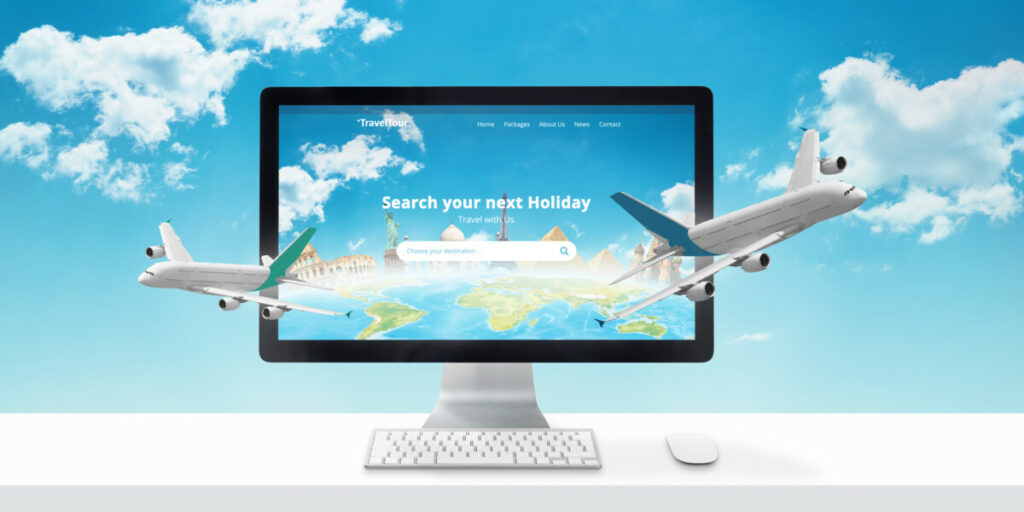Travel can get complicated. Whether you’re juggling flights and train rides to tour Europe or are scrambling to find hotels and rental cars for a business trip, dealing with the details can be stressful. That’s why Global Distribution Systems exist.
Global Distribution Systems (GDS) manage travel reservations through online platforms. These systems feature up-to-date information on airline seats, rental cars, hotel rooms, tour operators, and more, streamlining the overall process for customers and service providers alike.
Though there are a lot of moving parts and detailed processes, GDS management is not as complicated as it seems. Understanding and leveraging GDS management will help you make your next trip seamless and enjoyable.
How Does a GDS Work?
Global Distribution Systems are computerized networks that facilitate transactions between customers and travel companies. Service providers—like airlines, rental car companies, hotel chains, city railways and metros, boat rental and ferry companies, etc.—collaborate with GDS managers to make it easier for customers to access their services. Basically, a GDS acts as a liaison between providers and customers, communicating fare prices, inventory, schedules, and more.
For example, using a GDS, a customer could book a trip that involves a flight to the destination, a rental car, two different hotels, a metro pass, and a flight home. Each of the travel services booked by the customer could be offered by a different service provider, but because the customer used a GDS, all of the services could be booked on one platform with one main transaction.
Providers grant GDS management the legal permissions necessary to access their data. This means that GDS managers will be able to see how many seats are available on an upcoming flight, what kinds of rooms are available in a hotel, and so on.
Service providers grant GDS managers live access to data, which allows the GDS to provide customers with current, updated information on each area of travel services. This is a critical part of the business arrangement, as it ensures that the customer is being provided accurate information that will make the travel planning process as seamless as possible.
How Does a GDS Use My PNR?

Once a customer requests services through a GDS, the GDS then routes the request to the service provider’s system, working internally to confirm the reservations. These transactions are often automated and maintain a profile for the customer within the system.
This profile is called a passenger name record, or PNR, and it contains all of the relevant information about the customer’s itinerary. PNRs allow service providers to exchange information within the travel industry, and they can also be useful in screening threats like terrorist attacks or smuggled goods.
Some customers worry that the GDS will be able to manipulate their personal information, but a PNR only contains five basic personal elements when it is created: the passenger’s name, flight, contact information, ticket number, and most recent updates.
In other words, the PNR is designed to make it easier for customers to confirm, edit, or cancel travel arrangements without having to go all the way back through the system. GDS managers and service providers are legally bound to protect customers’ privacy and only use this information as it will benefit the individual passenger in his or her travel experience.
Once the service provider has confirmed that the requested seats or items are available, the GDS will send the customer a digital confirmation of the travel plans, including a six-digit identification number for their PNR.
It can take up to three days for the payment to be confirmed and tickets to be officially distributed. If there are any hiccups in the process, the service provider must either offer an alternative to the requested service or provide the customer with a full refund.
Why Is GDS Management Beneficial?
Overall, the mission of any GDS is to streamline the business of service providers and enhance the customer experience. Customers who have had a positive, easy experience booking travel through a GDS are likely to do it again; vice versa, customers who are frustrated with the process will likely seek out an alternative process the next time they have to travel. By making all of the elements of travel as manageable as possible, GDS management increases profit for travel agencies by cultivating customer loyalty.
For the customer, GDS management offers the benefit of price comparison. For instance, rather than calling several car rental companies or looking on half a dozen websites for the most affordable ground travel options, customers are able to view all of their choices on a single web page.
The GDS can list the make, model, price, and conditions of each available car rental, listed next to each different service provider. This way, customers can easily compare their options and plan their trip according to a personal budget and preferences.
Best-Known GDS Vendors

The GDS industry has come a long way since the 60s; while Sabre is still a major player, several GDS companies operate today.
The major global distribution systems for travel reservations include:
- Amadeus is the world’s largest GDS, accounting for about 40% of GDS transactions, and it’s especially popular in Europe. Though many of these reservations are for airfare, it’s still a powerful tool for hotels, with over 600,000 hotels connected.
- Sabre is the second-largest GDS, accounting for about 35% of travel agency bookings. Around 175,000 hotels are connected to Sabre, but its portfolio in North America is larger than its competitors.
- Travelport GDS owns systems called Galileo, Worldspan, and Apollo.
- Travelsky is a state-run GDS in China.
In addition to these big GDS companies, you’ll find smaller, regional players like KIU, which is popular in Latin America.
Amadeus
Accounting for about 40% of GDS transactions, Amadeus is the world’s most regularly used GDS. It’s especially large because of its use in Europe, Africa, and the Middle East. Consolidating the service of over 490 airlines, 770,000 hotels and properties, 69 car rental companies, 43 railway carriers, and 53 cruise and ferry lines, Amadeus is an understandably favorable GDS.
Sabre
As the second-largest GDS in the world, Sabre originated from American Airlines, primarily serving American and Asian-Pacific areas. Accounting for approximately 35% of travel bookings, Sabre connects over 440 airlines, 50 railways, 37 car rental companies, 20 cruise lines, and over a million hotel properties.
Travelport
Last but not least, the third main GDS is Travelport. Travelport has the most global coverage of services, customers, and providers, uniting all continents through its distribution channels. Travelport streamlines the services of over 650,000 hotel properties, 400 airlines, 125 affordable carriers, 50 cruise lines, 19 railway carriers, and car rental companies in over 38,000 locations. TravelPort also covers well-known providers like Worldspan and Galileo.
Conclusion
GDS is revolutionizing the way that flight, hotel, and rental car companies handle their reservations.
By taking advantage of this powerful computerized platform, customers can save time and energy when planning a trip, while service providers benefit from improved efficiency.
With the advancements made in digital technology over recent years, GDS has become not only widely accessible but also incredibly user-friendly.
It’s no wonder they’re now an integral component of travel arrangements globally.


